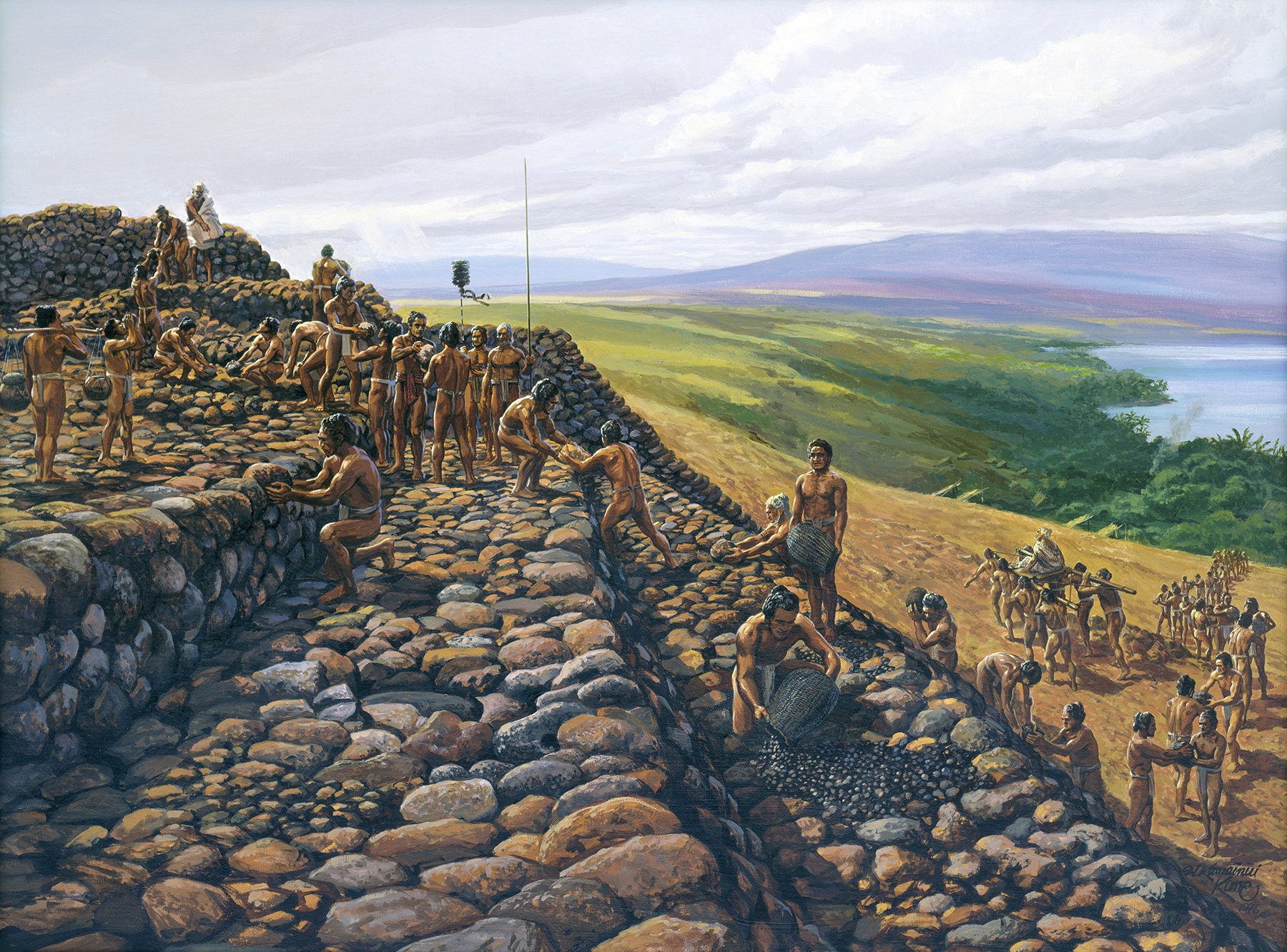
Born was the land, born were the chiefs, born were the common people.
The land, the chiefs and the commoners belong together.

For Hawaiians, the natural environment was imbued with religious significance. Geological features, plants and animals were often revered as kinolau, or manifestations of the many gods. Religion pervaded people’s lives – from the maka‘āinana (commoners) to the highest ranks of ali‘i, who ruled as embodiments of the gods. Ali‘i held the responsibility of caring for both the land and the maka‘āinana.
Hawai‘i’s complex social hierarchy was bound by a code of strict prohibitions, or kapu, that divided people by class and gender. Ali‘i of the highest rank possessed kapu moe, which required that people prostrate themselves in the ali‘i’s presence. Men and women were forbidden from eating together, an ‘ai kapu that was “universal, strictly enforced, and also punishable by death.”1 Women were especially restricted. They were barred from religious temples and could not eat foods such as banana, coconut or pig. They also were not permitted to handle kalo, an important kinolau of the god Kāne.
The ‘ai kapu not only regulated eating but applied as well to the ‘āina, where strictures on fishing, planting and harvesting helped conserve natural resources. O.A. Bushnell argues that certain kapu on cooking and sanitation contributed to the robust health of Hawaiians. The British captain James King, who sailed on Cook’s third voyage, wrote that the people were “exceedingly cleanly at their meals and their modes of dressing both their animal and vegetable food, was universally allowed to be superior to ours.”2
As populations increased and agricultural methods became more complex, governance structures emerged that favored the consolidation of rule, the implementation of a tribute system, and the emergence of a priestly class called kahuna. The kahuna reinforced the ali‘i’s divine right to rule, symbolized in the numerous heiau3 that had sprung up around the islands. In 1790 – 1791, after hearing a kahuna’s prophecy, Kamehameha I ordered the construction of Pu‘ukoholā Heiau in Kawaihae, Hawai‘i, to affirm his spiritual mandate to consolidate the kingdom. Two decades later, in 1810, Kamehameha became the first leader to unify the Hawaiian Islands, thereby taking control of the islands’ political, economic and social destiny.
2Cook, James, The Voyages of Captain James Cook, Volume 2, William Smith, London, 1842, p. 423.
3Stone temples built without the use of mortar.

